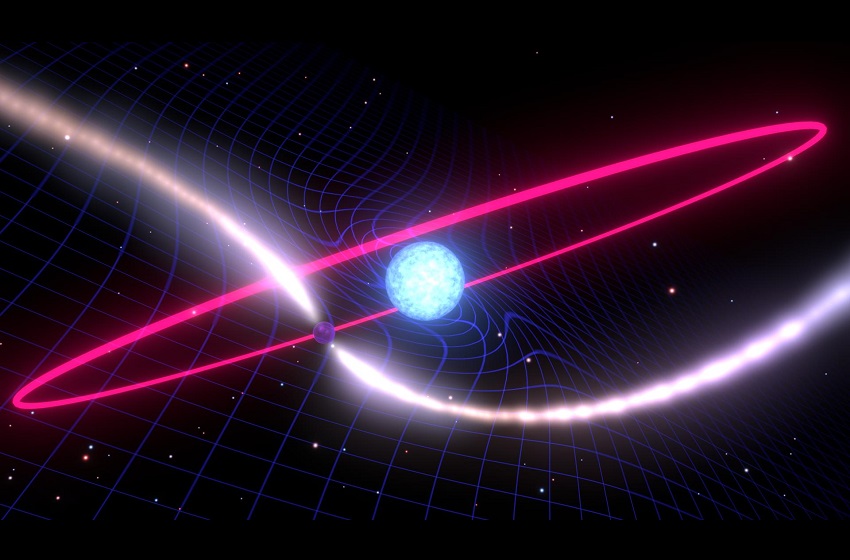Extreme star’s origin confirmed

Research begun almost 20 years ago has revealed a subtle effect predicted by Einstein’s general theory of relativity. For AUT’s Dr Willem van Straten, Associate Professor of Radio Astronomy and Space Research, who was part of the original observation team in January 2001, the result is especially significant.
“Einstein’s general theory of relativity is the best understanding of gravity we have. By testing it, astronomers are trying to understand the boundaries of our universe, where ‘normal’ rules no longer apply. For this experiment, we monitored a pair of the most extreme bodies in nature – a white dwarf and a neutron star. And while it might sound esoteric, general relativity is crucial to everyday applications like GPS mapping as it helps us pinpoint exactly where we are in relation to our surroundings and allows accurate mapping. Testing the boundaries of Einstein’s theory is important to astronomers’ and physicists’ understanding of our universe.”
Dr van Straten worked alongside Professor Matthew Bailes of Swinburne University of Technology (Melbourne, Australia) in the first observing campaign in 2001, and both went on to co-supervise Dr Vivek Venkatraman Krishnan in his PhD at Swinburne.
Dr Venkatraman Krishnan is now at the Max Planck Institute for Radio Astronomy in Bonn, Germany, and has published the joint research of the international team as lead author in Science Magazine.
“Einstein’s theory has stubbornly refused to fail,” says Dr van Straten. “We will continue to search for its limits. For astronomers, finding the limits of general relativity will allow us to enter a new area of creativity. Our past research has shown that Einstein’s theory holds, even in the extreme environment of a white dwarf and neutron star, so we are now using general relativity to understand the binary system.
“These are the most extreme edge of nature – a white dwarf has the mass of our Sun in the size of the Earth (100 earths would fit across the Sun’s diameter), while a neutron star is even more extreme: the solar mass is packed into something the size of Auckland, about 20 km across. These are the final states of matter before it completely collapses into a black hole.”
The unique pairing of the white dwarf and neutron star was discovered 20 years ago using CSIRO’s Parkes Observatory’s 64 m radio telescope. The two bodies’ orbit is so compact they orbit at about 500 km per second.
These observations are the first that show the plane of a neutron star’s orbit being dragged around, known as ‘frame-dragging’. The entire orbit is being dragged around by the white dwarf’s spin, which is misaligned with the orbit. “We could model our observations only by including this general relativistic effect”, explains Dr Venkatraman Krishnan, “which in turn allowed us to measure the spin of the white dwarf and add an important piece of evidence to the puzzle about how this rare binary system formed.”
Frame-dragging is visualised in this video: